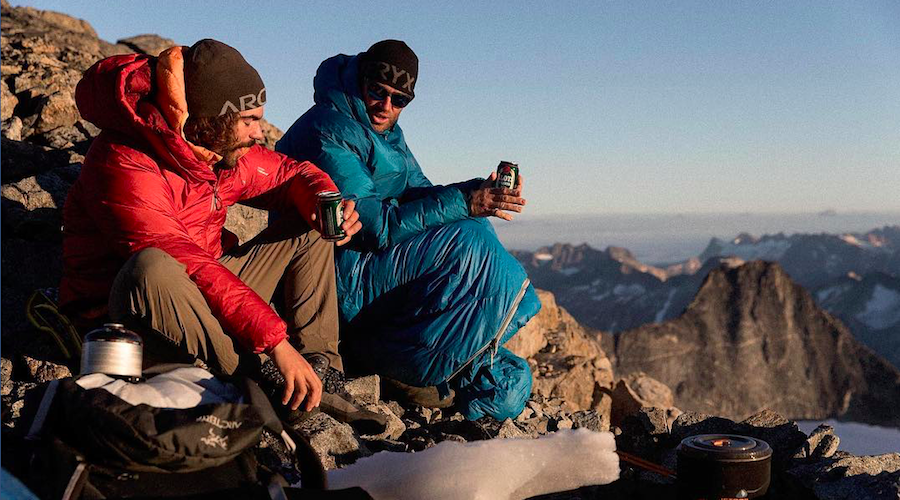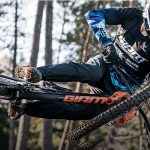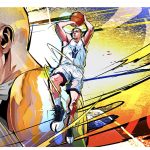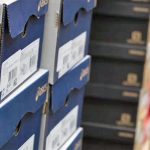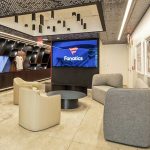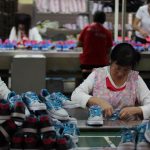Amer Sports reported its losses widened in the second quarter due to costs involved with its ongoing restructuring and transformation efforts.
The company’s core brands include Salomon, Wilson, Atomic, Arc’teryx, Mavic, Suunto and Precor. Smaller brands include DeMarini, Louisville Slugger, ENVE Composites, Sports Tracker and Armada Skis.
Overall, results were largely in line with management’s plans from a sales, margin and expense standpoint, Heikki Takala, president and CEO, said on a conference call with analysts. Amer maintained its guidance for the year.
Sales in the quarter improved 2.1 percent to €487.3 million ($569.1 mm) from €477.4 million.
Sales in the Ball Sports and Winter Equipment areas were impacted by the loss of a number of doors due to last year’s bankruptcies in the U.S. Mavic’s sales were also challenged by high OEM and retail inventories.
On the bright side, sales grew at strong double-digit rates in most of its strategic priority areas. This includes Apparel, up 22 percent; owned retail, up 25 percent overall with same-store sales growth of 7 percent; e-commerce, vaulting 45 percent; and China, up 20 percent.
Amer also continues to be impacted by channel shifts. Direct-to-consumer (D2C) sales were up double-digits for Amer while growth on third-party websites was described as “fast.” Traditional wholesale was down versus a year ago, especially in the U.S. partially due to the reduced store footprint following the 2016 retailer bankruptcies.
“Whilst our sell-through in most of the US wholesale market was strong, our sales into the channel were still down as we annualized the 2016 customer bankruptcies with now lower number of physical doors,” said Takala.
The loss in the quarter reached €24.0 million ($28.0 mm) against a loss of €14.7 million a year ago.
Gross margins in the quarter was basically flat at 44.5 percent versus 44.7 percent a year ago and Takala saw margins are “normalizing.” The higher loss reflected an increase in operating expenses by €12 million, driven by investments into transformation first announced last year that included many omni-channel and digital investments.
EBIT excluding non-recurring items showed a loss of €24.8 million ($29 mm) against a loss of €12.1 million in the same period a year ago. Including charges, EBIT showed a loss of €23.8 million ($28.0 mm) against a loss of €12.1 million.
Among its segments, sales in its Outdoor segment grew 3.2 percent to €238.3 million ($278.3 mm) from €231.0 million and added 3 percent on a currency-neutral basis.
“The wholesale market, especially in the US, continued to be challenging,” said Amer in its statement of its Outdoor segment. “At the same time, own retail and e-commerce continued to perform well.”
Among categories in the Outdoor segment, the big winner was Apparel, which grew 21.3 percent to €59.2 million and expanded 22 percent on a currency-neutral basis. The gains were driven by Arc’teryx.
Footwear advanced 3.2 percent to €100.1 million and added 2 percent on a currency-neutral basis. Takala said footwear was adversely impacted by global distribution consolidation, and volatility in Latin America. Latin America caused a 5 percent drag on footwear’s sales.
Cycling sales were down 17.4 percent to €31.4 million and off 18 percent currency-neutral. Takala said Mavic’s sales were impacted by high OEM and retail inventories, together with more second half product launches planned for 2017 versus more first half launches in 2016. At the same time, ENVE grew 26 percent, mainly due to global distribution expansion. The Mavic business is expected to stabilize in the second half.
Sports Instrument’s sales climbed 7.4 percent to €33.4 million and grew 7 percent currency-neutral. The gains were attributed to Suunto’s Spartan multisport watches.
In Winter Sports Equipment, sales slid 11.8 percent to €14.2 million and was off 12 percent on a currency-neutral basis. Takala noted that the second-quarter represents only 3 percent of Winter Sports Equipment and that it was more important to see that Winter Sports Equipment pre-orders for the coming season are ahead by 5 percent compared to the previous year.
By region, the top performance for the Outdoor segment came in Asia Pacific, up 12.7 percent to €44.5 million and gaining 12 percent on a currency-neutral basis. In the Americas, revenues increased 9.7 percent to €72.2 million and grew 9 percent currency-neutral. In the EMEA region, sales slid 3.3 percent to €121.6 million and gave back 3 percent on a currency-neutral basis.
The Outdoor segment’s operating earnings excluding non-recurring items showed a loss of €31.1 million ($36.3 mm) compared to a loss of €16.0 million a year ago. Amer said currency-exchange fluctuations impacted earnings by €3 million while lower gross margin had a negative impact of approximately €2 million. Operating expenses decreased by approximately €15 million. Other income and expenses and currencies had a negative impact of €3 million on EBIT.
In the Ball Sports segment, sales reached €167.5 million ($195.6 mm), up 1.2 percent in euros and flat on a currency-neutral basis.
Takala said sales were adversely impacted by the challenging U.S. wholesale market and baseball de-stocking ahead of changes in bat regulations in early 2018. Overall, he considered the results “okay” given the number of sporting goods stores exiting the marketplace last year in the U.S.
Individual Ball Sports sales advanced 2.0 percent to €81.1 million and climbed 2.1percent on a currency-neutral basis. Team Sports’ sales inched up 0.4 percent to €86.4 million but gave back 2 percent on a currency-neutral basis.
By region for the Ball Sports segment, sales in the Americas inched up 0.5 percent to €116.6 million but slid 2 percent currency-neutral. EMEA ‘s sales eased 0.9 percent to €31.4 million but gained 1 percent on a currency-neutral basis. Asia-Pacific sales gained 9.6 percent to €19.5 million and added 8 percent currency-neutral.
EBIT excluding non-recurring items rose 16.8 percent to €9.0 million ($10.5 mm). Improved gross margin had a positive impact of approximately 1 million on EBIT.
In its Fitness segment, sales rose 0.7 percent to €81.5 million ($95.2 mm) and were up 1 percent on a currency-neutral basis. Takala said net sales for Precor increased slightly as the company rolled out new products and order book continued to strengthen.
By region, sales in the Americas for the Fitness segment increased 2.5 percent to €49.2 million and grew 3 percent currency-neutral. EMEA sales inched up 0.6 percent to €17.5 million but gained 4 percent currency-neutral. In the Asia Pacific region, sales were down 4.5 percent to €14.8 million and was down 4 percent on a currency-neutral basis.
Operating profits excluding non-recurring items in the Fitness segment fell to €2.5 million ($2.9 mm) from €4.5 million, down 44.4 percent. Eroding gross margins pulled down EBIT by approximately €3 million. Operating expenses decreased by approximately €1 million.
Looking ahead, Amer said sales in local currencies are still expected to increase from 2016, despite short-term market softness. EBIT excluding non-recurring items is expected to be approximately at the level of 2016.
The growth in 2017 is expected to be biased to the second half of the year. EBIT excluding non-recurring items includes further accelerated investment into the company’s transformation efforts. Amer said it will continue to focus on growing the core business and the five prioritized areas: Apparel and Footwear, US, China, D2C, as well as digitally connected devices and services.
Amer also noted that a restructuring initiated in August 2016 designed to free up operating expenses of approximately €20 million, which have been reallocated to fund growth, has been completed. Due to the challenging market conditions, in February 2017 Amer expanded the cost restructuring program initiated in August 2016, with the objective to reduce operating expenses worth approximately 100 EBIT margin basis points by the end of 2018, with full impact in 2019.
“In line with our expectations, entering into H2, we see the trading conditions gradually improving,” said Takala. “This improvement, coupled with our robust pipeline of brand initiatives and strengthened omni-channel capabilities, is supporting our growth in the second half of the year and beyond. Importantly, we prioritize profitable growth, and continue to drive productivity, enabled by ongoing transformation and restructuring.”
Photo courtesy Arc’teryx

